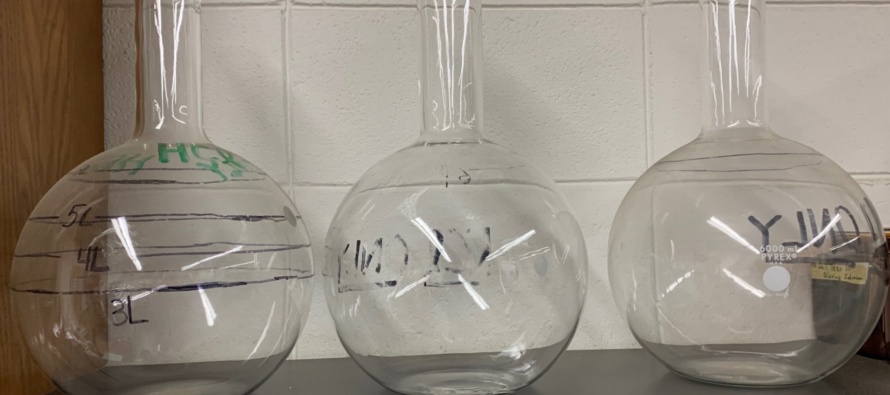It’s a Matter of Chemistry

Related Articles
- Fertilizing Cotton with Poultry Litter 5
- Spring Nitrogen Fertility Suggestions for Wheat 0
- Micronutrients for Mississippi Crop Production 4
Latest Tweets
The presence or amount of various non-nutrient elements in foodstuffs has been in the media recently. What have been called ‘heavy metals’ and their neighbors, the ‘metalloids’, are factors in, and are influenced by soil chemistry, nutrient management, and soil management.
Arsenic (As), boron (B), cadmium (Cd), chromium (Cr), cobalt (Co), copper (Cu), iron (Fe), lead (Pb), mercury (Hg), molybdenum (Mo), nickel (Ni), strontium (Sr), tin (Sn), titanium (Ti), vanadium (V) and zinc (Zn) occur naturally in soils or may be added from other activity. Some commentaries consider the heavy metal terminology imprecise, with ‘trace elements’ and/or ‘potentially toxic elements’ (PTEs) more accurately reflecting their status in soils.
The chemical form of an element dictates the pathway as they move through, or alternatively do not move, from soils to plants to foods. Elements change oxidation states in the soil environment which can affect the toxicity of the element.
Chromium is carcinogenic to humans in the hexavalent (+6) oxidation state and is the subject of intense environmental safety interest. Conversely, it is essential for humans and mammals in trace amounts with roles in glucose and fat metabolism in the trivalent (+3) oxidation state and the subject of intense biomedical interest.
Changes in oxidation states that affect toxicity of a particular element result from reduction and oxidation processes in the soil matrix. These involve the transfer of electrons from one atom, ion, or certain atoms within a molecule to another: oxidation is gaining an electron, reduction is losing an electron. As noted above, trivalent Cr has positive functions in humans and other mammals. Hexavalent Cr, while critical in several industrial processes, is 1000 times more toxic. In low redox potential environments, trivalent Cr is the most stable form when pH is between 4 and 8.
Arsenic, Cd, Hg, and Pb are highly toxic non-essential trace elements with no known biological function. Industrial by-products which contain these elements must be below concentration ceilings. Maximum loadings per acre over time are also established by regulation.
The micronutrients B, Cu, Zn, Mn, Fe, Ni, and Mo are essential for plant growth, and have potential for toxicity if overabundant and excessively absorbed by plant roots. Of these nutrient elements, Cu, Ni, Mo, and Zn have established soil loading limits from biosolids application.
Adsorption – desorption processes occur when materials such as fertilizers and/or PTEs enter the soil. The chemical terminology of “partitioning between the aqueous and solid phases” means they may or may not ‘stick’ to the soil clays and organic matter. The outcome largely depends on the soil pH and is related to the ion exchange process.
Ion exchange involves electrically charged elements called ions. Positively charged ions are cations; negatively charged ions are anions. Clay particles and organic matter are negatively charged, and thus hold positively charged cations. These can be replaced by other positively charged elements that may enter the soil. This process, influenced by soil pH, underlies many fertilizer programs including those with positively charged plant essential PTEs.
Chelation, particle size distribution, clay types and quantities, and organic matter content are among other soil processes and chemical/physical factors involved in determining element oxidation states. Plants themselves alter the chemical environment of the rooting zone, and thus influence potential PTE uptake either through uptake mechanisms or root exudate induced changes.
In summary, whether a trace element is present in soils does not indicate potential toxicity. Whether there is a transfer of trace elements from soil to plants to humans is a complex function of many site-specific chemical factors. These highly simplified examples are not to discount potential issues but to illustrate PTE bioavailability is a matter of chemistry.
The author appreciates the assistance of Drs. Mike Cox and Keri Jones.





Let me tell You a sad story ! There are no comments yet, but You can be first one to comment this article.
Write a comment